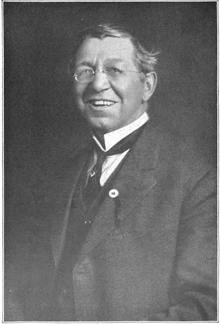March 1, 1845: President John Tyler signs the annexation of Texas

After Mexico successfully won their independence from Spain, they sought to populate their newly acquired, vast holdings. The Mexican legislature passed laws opening up Texas to foreign settlement. Throughout the 1820's, settlers from the United States flooded over the border seeking new economic opportunities. One of the first groups of Americans to cross into Texas was lead by Virginian Stephen F. Austin. He established a permanent settlement on the edge of the Brazos River in 1822. Initially there was peace and prosperity in the Mexican territory, however, the new Anglo-settlers had a tendency of flouting Mexican law, especially the prohibition on slavery. In response, the Mexican government suspended further settlement of Texas. The American settlers grew increasingly independent. The Texans asked Mexico to allow them to establish there own government but the Mexicans refused and further clamped down on the Yankee settlers. After the Texans decided to support a popular local uprising, President Antonio Lopez de Santa Anna decided to personally take care of both the revolt and the Texas problem with force.
The Texas Revolution broke out in 1835, after the Battle of Gonzales. The Texans retreated to an old Spanish mission in San Antonio, named the Alamo. Santa Anna attacked the Alamo with the full might of his army. After a thirteen day siege, the Alamo fell and the defenders were massacred. The Alamo spurred the Texans to call for a convention, in which they declared their independence on March 2, 1836. A new Texan army was created under General Sam Houston to combat Santa Anna's army. After several small engagements, the retreating Texan army achieved victory in the Battle of San Jacinto. With the capture of his army, Santa Anna was forced to sign a treaty granting Texas its independence.
Since its inception, several prominent members of the fledgling Texan republic wanted to join with the United States. President Andrew Jackson and his successor, Martin Van Buren both vied to have Texas introduced into the union. However, their efforts were in vain due to internal tensions over the slavery question. When the Whig president William Henry Harrison died in office, his vice president, John Tyler ascended to the presidency breathing new life into annexation debate. Tyler was not a very popular figure in the Whig party, but he believed the annexation would make his presidency. In 1843, Tyler asked his Secretary of State Abel P. Upshur to negotiate a treaty with Texas. When the treaty was successfully negotiated in 1844, it only faced one hurdle, which was ratification in the Democratically controlled Senate. In spite of Tyler's efforts, the Democrats struck down the treaty. Tyler had failed, but annexation was not dead. Congress created a joint committee to create their own annexation agreement. Tyler ran for reelection in 1844, but lost to his Democratic contender, James K. Polk. The joint resolution on Texas reached Tyler's desk in March 1845, days before he left office. The lame duck Tyler signed it into law on March 1st.



Comments
Post a Comment